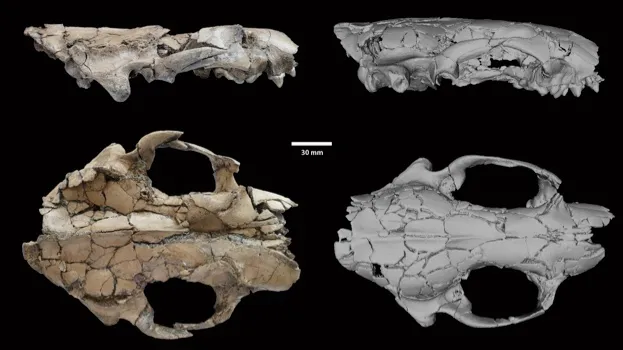The newly described species of otter, Siamogale melilutra, is estimated to be the size of a modern wolf, weighing approximately 110lbs and is one of the largest otter species ever discovered.
The skull was found in the Miocene lignite beds in the Yunnan Province of China, an area which is well-known for its diversity of fossils, including elephants, apes, birds and crocodiles.

“While the cranium [skull] is incredibly complete, it was flattened during the fossilization process,” said Dr. Denise Sue who is a co-author on the paper, and curator and head of palaobotany and paleoecology at the Cleveland Museum of Natural History.
“The bones were so delicate that we could not physically restore the cranium. Instead, we CT-scanned the specimen and virtually reconstructed it in a computer.”

The site was originally a densely wooded wetland and the environment, with its slow moving water and very fine sediments, has meant that very delicate specimens that are not normally preserved have been fossilised such as this otter skull.
The scientists were able to estimate the size and weight of the S.melilutra otter from just the skull.
“The length of the skull (and sometimes the length of a certain tooth) can be a close approximation of body weight," said Dr Xiaoming Wang, lead author on the paper, and curator and chair of vertebrate paleotonology of the Natural History Museum in Los Angeles.
"This doesn't always work precisely, but in the absence of a better estimate that's what we have to settle for."
The species name “melilutra” is a combination of the Latin names for badger (meles) and otter (lutra), as the skull exhibits features similar to both animals.
There are now two known species within the Siamogale genus, this newly described species found in China and a species known from a fossil found in Thailand, Siamogale thailandica.
Read the full Journal of Systematic Paleontology paper
Main image: Reconstruction of the fossil otter in its paleohabitat. © Mauricio Anton
